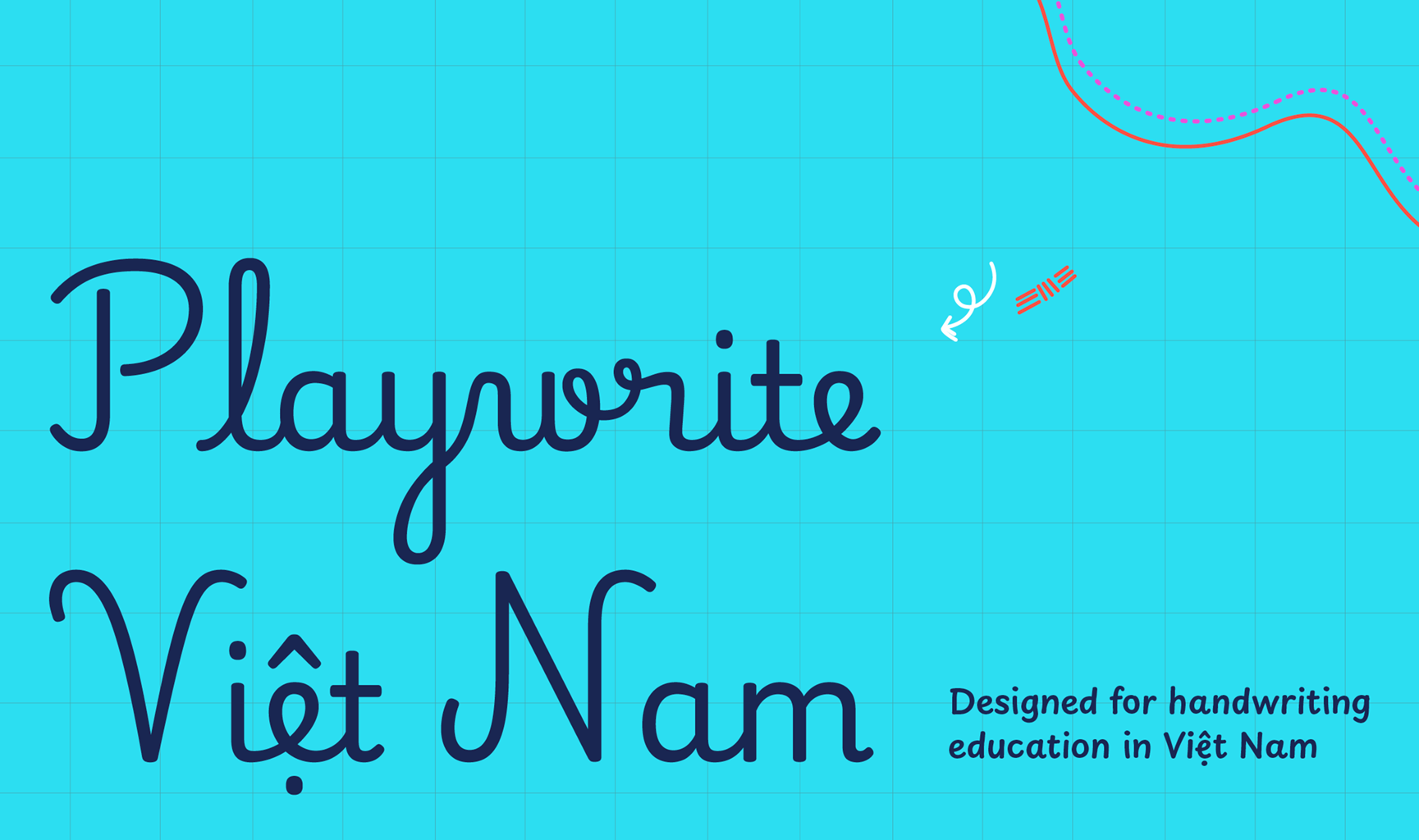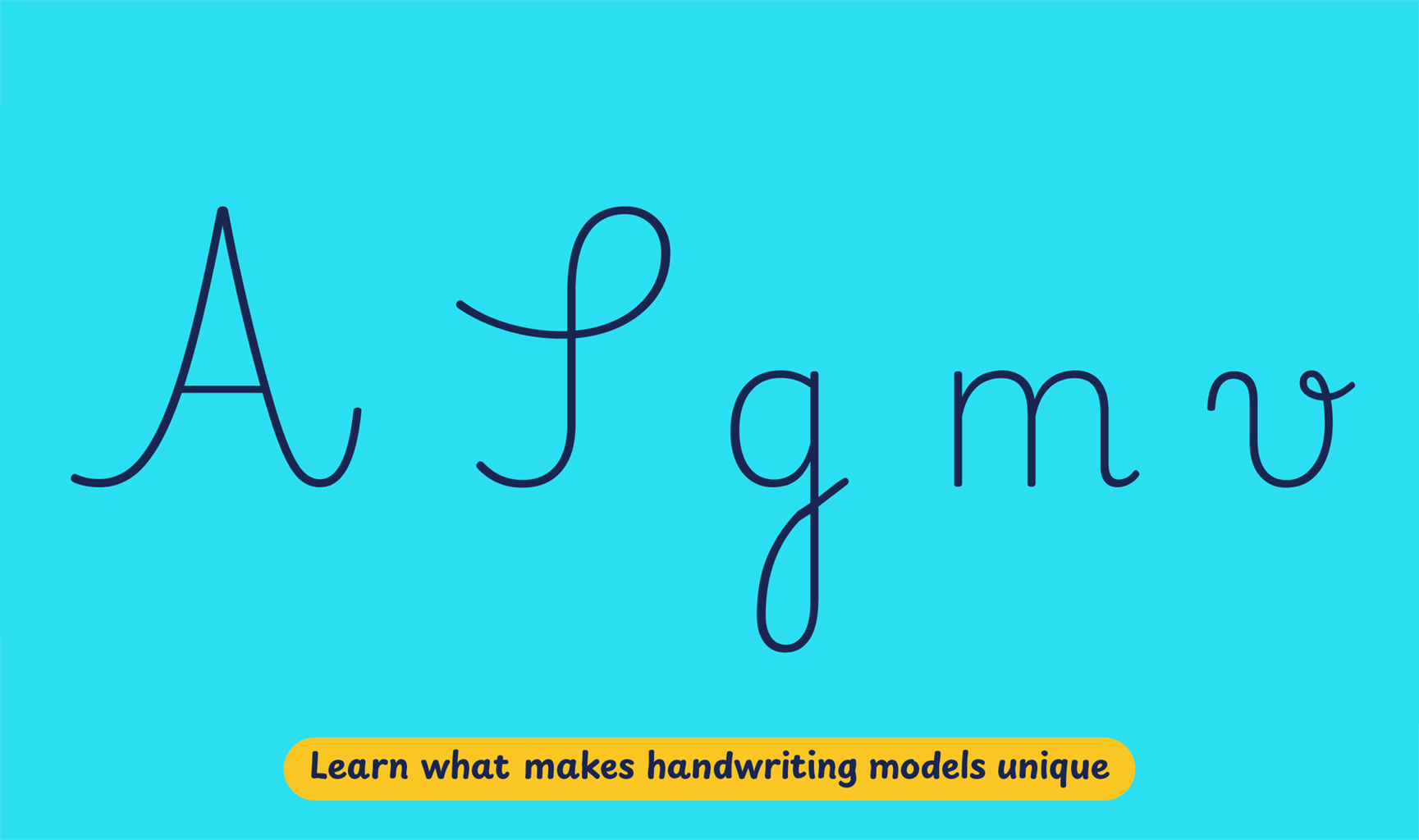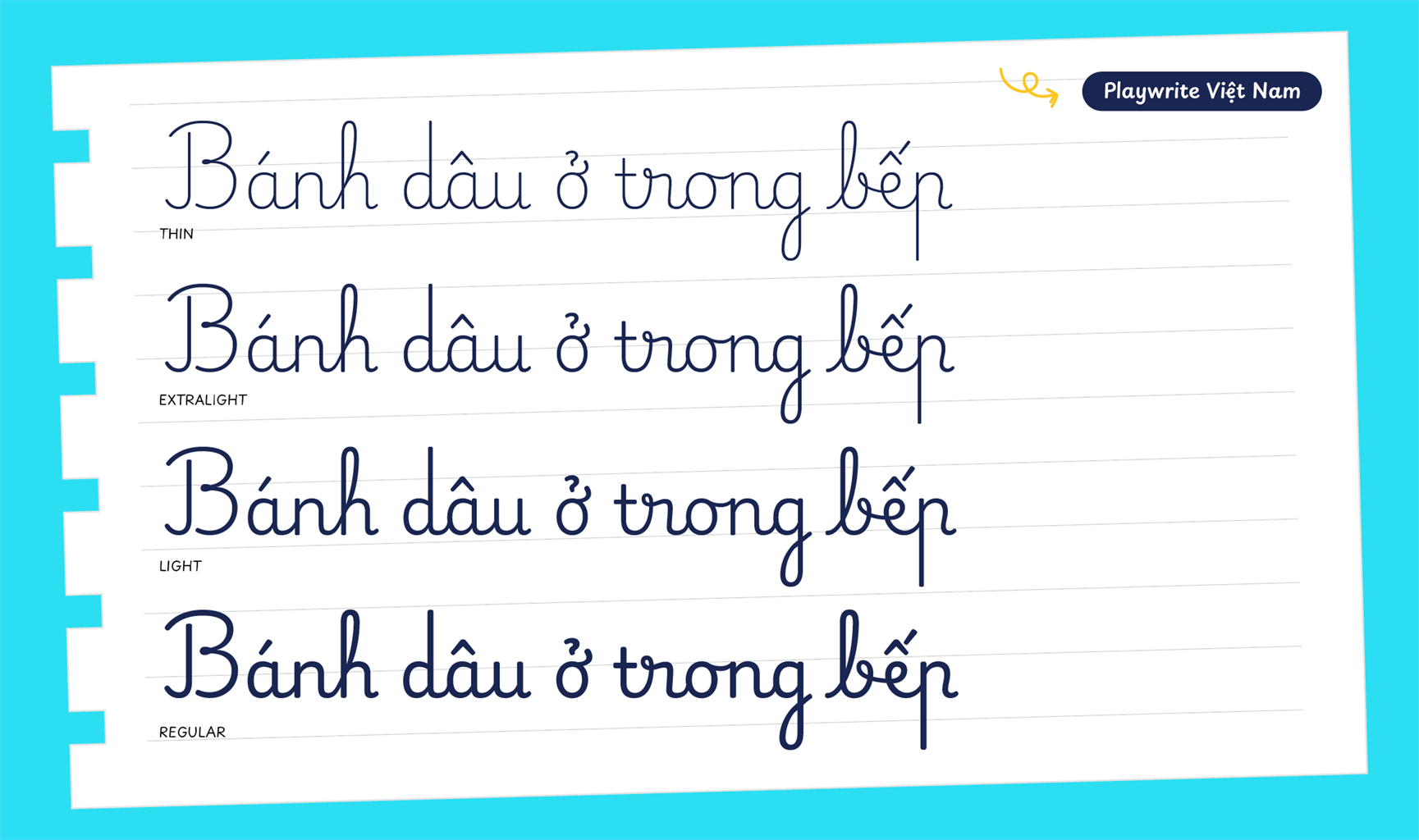In Vietnam, an official handwriting model for teaching in primary schools was adopted in 2002. It is called the mẫu chữ thảo tiếng việt, or Vietnamese official cursive script, and has been in use from academic year 2002-03 onwards. Based on this model, students learn to write in both upright and (optionally) sloped cursive letters, without ever being taught print letters. Nevertheless, they do practice drawing the basic strokes that make up letters in preparation. Handwriting education happens between Grades 1 to 3, and while students are introduced to writing using a pencil, they graduate to writing with fountain pens while they are still in primary school.
Playwrite Việt Nam is a variable font with a weight range from Thin (100) to Regular (400), and supports over 150 Latin-based languages. It has a single-weight sibling with Guides, Playwrite VN Guides, designed to harmonize seamlessly with this main font while providing a visual aid for primary school children.
To contribute, see github.com/TypeTogether/Playwrite.

The model follows the structure and proportions of the upright, monolinear version of the Vietnamese official cursive script. These are the versions that are prioritized for teaching, while others may be introduced if the situation is conducive. The letter shapes derive from the French traditional vertical cursive writing, featuring long ascenders and descenders and round and fully joined lowercases. Letters 'b', 'r', 'v', and 'w' make use of knots to change the stroke direction, 'n' and 'm' have curved entry strokes and 'x' is created by means of two mirrored curves. Notable upper case features are the triangular yet decorative shapes of 'A', 'V' and 'W', and an 'S' with an upright spine.

Playwrite Việt Nam appears in font menus with a two-letter country code ‘VN’,
Playwrite VN, and features four styles: Thin, ExtraLight, Light, and
Regular.
The download .zip file includes the variable font and standard static ttf fonts
for each style.

The Playwrite school fonts are based on the findings of Primarium, a groundbreaking educational effort that documents the history and current practice of handwriting models taught to primary school students worldwide. This typographic engine serves teachers, educators, and parents by generating localized libre fonts. These Playwrite fonts are complemented by Playpen Sans, an informal and fun typeface designed for annotations, instructions, and student notes – that also includes emojis.
For more information about the Primarium project, visit primarium.info and to learn more about handwriting education in Việt Nam, see primarium.info/countries/vietnam.
Windows: Download the font file to your computer. Navigate to where you saved the font file and double-click it to open. Click the "Install" button at the top of the font preview window. The font is now installed and ready to be used across your apps.
macOS: After downloading the font file to your Mac, right-click it in Finder and select "Open With" > "Font Book". Then, click "Install Font" in the font preview window that pops up. The font is now installed and ready to be used across your apps.
The Playwrite font family uses complex OpenType features to generate connected writing. Some common applications require these features to be manually activated.
Note: This font family doesn't include Bold or Italic styles, so please avoid applying them in text editors. If you use the common 'B' and 'I' buttons, you will automatically generate low-quality styles.
Google Docs and Slides: From the font selector drop-down, go to "More Fonts" and search for the desired font name, in this case, "Playwrite VN", and click OK. If some text is already selected, the font choice will apply.
Microsoft Word: Go to Format in the Menu bar, select Font, and then the Advanced tab. Activate "Contextual Alternates" and "Kerning for fonts below" to apply these settings to all text sizes.
LibreOffice: In macOS, to select the different styles, go to Format in the Menu bar, select Character, and use the Typeface menu.
Adobe InDesign: Open the Paragraph Panel and select Adobe "World-Ready Paragraph Composer" from the contextual menu.
Adobe Illustrator: Navigate to Preferences > Type, check the "Show Indic Options" box, and close preferences. Then open the Paragraph Panel and select "Middle Eastern Composer" from the contextual menu.
Adobe Photoshop: Access the Paragraph Panel, then choose "World-Ready Layout" from the contextual menu.
The above instructions are also available in PDF format here.